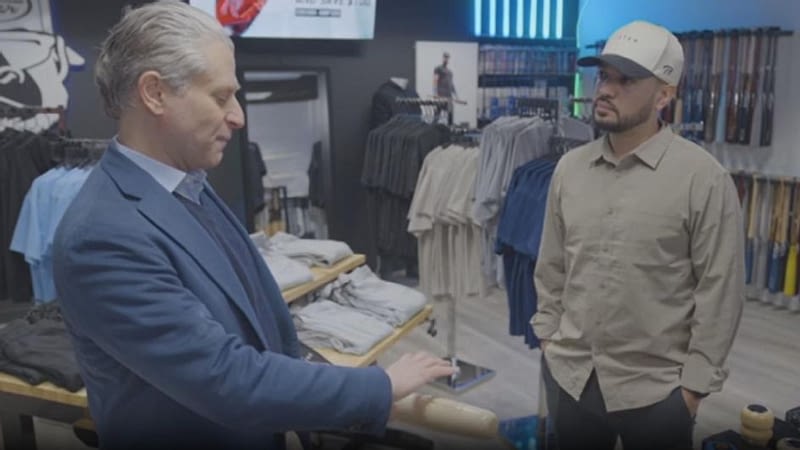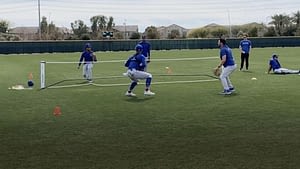The Rise of the Torpedo Bat: A Game-Changer in Baseball
Last Monday morning, Freddie Vargas, CEO of Tater Baseball, received a FaceTime call that would set the baseball world abuzz. On the other end was none other than Starling Marte, the New York Mets outfielder. Like many in the baseball community, Marte had witnessed the New York Yankees’ explosive performance, where they scored 36 runs and hit 15 home runs in a three-game sweep of the Milwaukee Brewers. The buzz wasn’t just about the Yankees’ performance but also about the unique bats they were using—bats shaped like bowling pins, now known as torpedo bats.
Marte, who has been using Tater bats since 2018, was intrigued. He wanted to try these torpedo bats, at least in batting practice, to see if they could give him an edge. “Well, they’re trending right now,” Marte said over the weekend. “Let’s see what happens when I use it. I have to give it a try.”
Freddie and his brother Jeremiah, who co-founded Tater Baseball with their father Fred Sr. in 2015, were quick to respond. They had Marte send them a data plot of his contact points on his bat barrel. Using this information, they designed a torpedo bat tailored to Marte’s specifications. By the end of the day, four new bats were ready to be shipped to Citi Field, awaiting Marte’s return from Miami.
The Tater Baseball Story
Torpedo-shaped bats aren’t new to Tater Baseball, a small family business based in Cheshire, Connecticut. The Vargas brothers grew up playing baseball and eventually played in college. The idea for a training bat came when Jeremiah was still in high school. With Fred Sr.’s engineering background, they ventured into the bat-making business, despite having no woodworking experience.
Fred Sr. was adamant about quality. “I told them, ‘We’re not going to do it half-ass,'” he said. “What’s going to differentiate us?” They started with four models, focusing on training bats, and soon moved operations from a backyard shed to a garage, and eventually to a shop in Cheshire. Today, Tater offers 800 to 900 models, including game bats for baseball and softball, and other equipment like batting gloves and apparel.
The Torpedo Bat Craze
Jeremiah explained the concept behind their torpedo bats. “We make what we call an underload trainer that is shaped like a torpedo. It’s really for sweet-spot training, but also to train underload for bat speed,” he said. “It mimics the torpedo shape, so we enlarge the sweet spot here, taper it off at the end so players have a visual representation of where to hit the ball.”
Tater’s first underload trainer came out in 2018, and by 2021, the torpedo style had become their staple. Jeremiah noted that 22 of the 30 major league teams use their training bats, with several others using them in their minor league organizations. The company collaborates with players, minor league hitting coordinators, and major league hitting coaches.
Breaking into the major league game bat market is no easy feat. Freddie described it as “cutthroat.” While 41 companies are approved by MLB, Marucci and Victus dominate with an estimated 60% market share. Tater entered the majors in 2018 and ranked about seventh or eighth last season, with Marte and Los Angeles Dodgers outfielder Teoscar Hernandez as their most prominent players.
- Chicago White Sox infielder Brooks Baldwin
- Travis Bazzana, the top pick in the 2024 MLB draft
- Nick Kurtz, the Athletics’ first-round pick last summer
These are just a few of the 150 professional players using Tater game bats at least part of the time.
Marte’s Special Connection
Marte holds a special place for the Vargas family. He was their first major league client, thanks to a stroke of good fortune. A family friend, Ruben Sosa, who used Tater bats, was Marte’s teammate in the Dominican Winter League in December 2017. Jeremiah recounted, “Marte was in a little bit of a slump, picked up Sosa’s bat, got a couple hits, and then here we are.” Marte has been using Tater bats ever since.
Other early clients included Gregory Polanco, Yan Gomes, and Carlos Correa. “Really, it was just bootstrapped word of mouth and making a good product and providing a good service,” Jeremiah said. “We like to say we have a relentless pursuit on making the best bat in the game.”
The Vargas brothers are passionate about baseball and baseball bats, discussing everything from grain deviation to max barrel diameter. “I love seeing the evolution of baseball bats,” Jeremiah said. “It’s great to see it being used in games and see the transition to help hitters be a little more competitive at the plate or give them a little bit more of an edge.”
The Making of a Torpedo Bat
The process of making a torpedo bat is similar to that of a regular bat. After Marte sent in his contact data, an analysis was made to determine the best shape for him. The overlay of Marte’s traditional bat compared with his new torpedo bat showed a small but significant difference in the sweet spot’s location.
“A small difference, but a big difference,” Fred Sr. said. With the sweet spot closer to the hitter’s hands, the bat has less flex, leading to better contact on balls hit closer to the hands. This was why some Yankees players, like Anthony Volpe, switched to the torpedo shape.
Jeremiah recommended using a slightly heavier game bat weight for the torpedo compared to the regular bat. “The reason being, when you do fatten out the barrel slightly at the sweet spot, it changes the density a little bit. The easiest way to describe it is more density, more pop; less density, less pop.”
Marte typically uses a 33.5-inch, 30.5-ounce bat. After a conversion, his torpedo bat was made an ounce heavier at 31.5 ounces. The wood, sourced from Canada, is delivered in precut, cylindrical slabs. Each slab is weighed and marked, then cut on a lathe, hand-sanded, and cupped. The process takes about six minutes, and on a busy day, Tater might produce around 150 bats.
The bats are then painted with a special lacquer, with MLB approving only certain colors for game bats. Players love to show off a little swag, so Tater has designed unique colors for batting practice. They created a glacier-colored bat for Marte and a special design for Hernandez for the Home Run Derby.
For now, the Tater Baseball crew continues to work long hours, fielding calls about torpedo bats and producing them for clients like Marte. “My gut tells me that there will be a place for torpedo bats and there will still be a place for regular game bats,” Jeremiah said. “But I think there’s going to be a significant uptick in the guys using the torpedo bats.”
Originally Written by: David Schoenfield





















